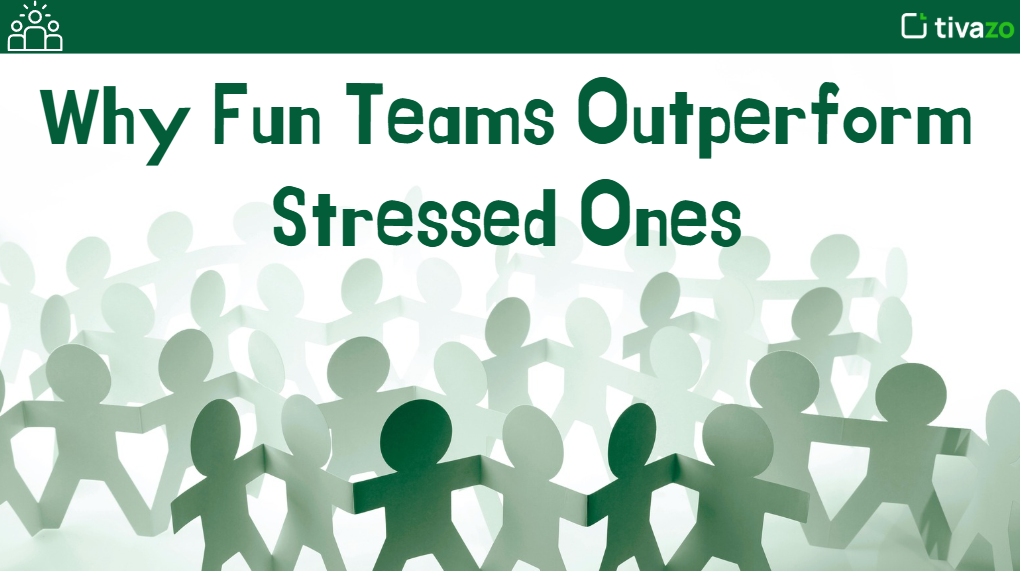In an age of perks, ping-pong tables, and flashy job boards posting 4 and 5 star reviews, employees aren’t fooled by ceiling-surface benefits. What people are really attracted to — and ultimately retained for — is an amazing workplace: a culture of people-first, psychological safety, and common purpose, not productivity. Whether you are leading a remote team, growing a start-up, or leading a corporate department, the future of success will revolve around one question:
Are you building a workplace that people actually want to be a part of?
Let’s unpack everything that goes in to creating an amazing workplace that attracts, engages, fulfills, and sustains top talent.
Key Highlights:
- What Makes an Amazing Workplace in 2025
- The 5 Untold Secrets Behind Every Amazing Workplace
- Final Framework: Your 5-Step Blueprint to an Amazing Workplace
- How to Measure if Your Culture Is Actually Working
What Makes an Amazing Workplace in 2025?
An amazing workplace today isn’t defined by looks or perks — it’s being defined by experience. In 2025, the most desirable places to work are those that live by the following mantras:
- Meaningful work, not meaningless meetings
- Trust and flexibility, not scheduled hours
- Growth, not grind
- Humanity, not hierarchy
Organizations that embrace these mantras don’t just get by — they thrive. They attract engaged employees, keep good people, and create cultures that inspire people to say “I love working here.”
Why the Old Rules No Longer Work: Shifting from Productivity to People-First
The days when companies relied on productivity metrics alone to measure effectiveness are over. Professional life is evolving so quickly nowadays that workplace trends and culture have made it clear that a people-first mentality is more than something any business should embrace — it is required. Companies that still treat mental health like an afterthought or who ignore employee burnout are already lagging behind. Today’s most amazing workplaces prioritize values like, empathy, emotional well-being and psychological safety,and build those into their culture.
It is no longer enough to look at employees as tools to get us to an annual target — they are trusted assets whose voices, needs, and experiences matter. The companies that are stilled by dated rules and impersonal KPIs are finding their very best talent choosing to work elsewhere, typically in far more progressive, human-centered environments. The qualities that make up a great workplace today are built around shared values of transparency, trust, and compassion; not simply managing deadlines, and dashboards.
The 5 Untold Secrets Behind Every Amazing Workplace
There’s a little-observed playbook among the most respectable companies in the world. These are the practices they may not advertise in their job postings, but deeply embed in their culture. Here are 5 untold secrets that play out in every truly amazing workplace.

1. Clarity Beats Chaos
One of the most underappreciated dimensions of building a great culture is clarity. When employees have clarity about their tasks, where the company wants to go, and how their role relates to that direction, they become much more confident and engaged employees. Anxiety and distraction often stems from a lack of clarity. But when roles are defined, goals are clarified and communication is frequent, a culture of trust is engendered. In great organizations, clarity is not a single document — it’s an ongoing discussion.
2. Autonomy Is Everything
Micro-managing employees is one of the quickest ways to kill off creativity, morale and retention. The best workplaces trust their people to get great work done, and offer them the freedom to do it their way. I’m not saying there’s no accountability — I’m saying employees need autonomy and the ability to make decisions, try things, and be responsible for the results of their efforts. The more people feel in control of their work, the more motivated, creative and loyal they will be. In an amazing workplace, freedom and autonomy are expected, not earned.
3. Recognition Isn’t Optional
Extraordinary teams are not developed only based on skill, but also appreciation. Recognizing your teammates is one of the most underrated ways to assist in driving performance, lifting morale, and establishing a positive feedback loop. No matter if it is a quick shoutout in a team meeting, a Slack emoji reaction or a special note, acknowledging someone’s effort is really important. Research shows that employees who feel appreciated are more productive, have a higher commitment level to the organization, and are much less likely to leave the organization. In amazing workplaces, celebrating wins (big or small) is a cultural way to engage employees, not a way to support staff to higher engagement.
4. Feedback Flows Both Ways
In traditional workplaces, feedback from direct reports is mostly explained in a top-down manner — this can have its place in an amazing workplace, but the invitation to give feedback is a two-way street. Employees are not just told how to do better, but instead invited to share their thoughts on what is working and what is broken. A culture built on feedback expands mutual respect and shared accountability. In addition, leaders who listen and act on what they heard from their teams are able to build relationships, create innovation, and the sense of shared responsibility for the success of the company.
5. Flexibility Is the Future
The pandemic shattered the beliefs that work was attached to a desk. Today, the companies considered the most admired are embracing flexibility (remote, hybrid, asynchronous, etc). Flexible work offers more than convenience, it is a demonstration of trust. When people manage their custodianship of time and environment, they tend to return back with focus, energy, and loyalty. Embracing flexibility creates greater inclusive in organizations allowing for caregivers, neurodiversity folks, and other people living in different time zones or locations to work with you more comfortably. It isn’t a perk anymore – flexibility is a tenet of today’s workplace.
How to Create an Amazing Workplace from Scratch (Even If You’re Small)
Startups and smaller teams often falsely believe that a strong workplace culture is an afterthought to address until they grow or land funding. But the best cultures are built from day one, not day 1000. Building a great workplace from scratch starts with building your core values from the beginning and making them your north star through every decision, especially hiring. When hiring, don’t just hire for skills – hire for mindset, collaboration, and alignment with your purpose. Second only to values and beliefs is communication, which can’t be overstated – even the smallest misalignment in a small team can pile on confusion. This is why you always want to over communicate, clarify expectations, and ensure everyone is on the same page!
You also want to encourage people to take initiative, contribute ideas, and step up when leadership opportunities present themselves! Lastly, establish meaningful rituals — whether that’s celebrating when you achieve your wins weekly to shoutassign team members. Rituals can seem insignificant – but tell me habits don’t create connection & identity? You can have 5 people but create all the energy, clarity, and meaningful purpose of a amazing workplace that people are truly excited to be part of!
Culture That Clicks: How Psychological Safety Builds Trust and Team Power
One of the most surprising discoveries in workplace psychology comes from the recently completed Google study Project Aristotle. This research showed that the greatest indicator of team performance was not the amount of individual experience, or educational background, but the level of psychological safety within the team. A psychologically safe environment means team members are comfortable enough to be vulnerable, and to take risks without the concern for being judged or punished.
A culturally safe work environment allows employees to take risks, share creative ideas, and express concerns without fear. However, this culture of trust not only drives creativity, but also engagement and loyalty to the team/organization, while providing a sense of belonging, which ultimately drives team performance over time.
That means your team must feel safe to:
- Ask questions
- Make mistakes
- Disagree in a respectful way
- Share new ideas
When psychological safety is present, creativity will flourish. So will loyalty.
How Recognition at Work Changes Everything
An astounding 78% of employees said they would be put in more effort if they felt more appreciated! Recognition at work can include more than formal recognition (trophies, awards, etc.), but is genuinely acknowledging effort and appropriately celebrating progress. When leaders and colleagues stop to say “thank you” in a sincere way, or to call out a public shoutout for performance that may not have been noted previously, there is an incredible ripple effect of motivation and loyalty that spreads throughout the workplace.
In an amazing workplace, recognition goes beyond just being a parcel of time spent, it is strongly rooted into the culture of an organization and can frame stakeholder interactions to make people feel appreciated, and create an environment where they want to give their best effort.
Mistakes to Avoid If You Want an Amazing Workplace That Lasts
Even well-meaning leaders make these culture-killing mistakes:
- Prioritizing profit over people
- Ignoring team feedback
- Lack of clear direction
- Favoritism or cliques
- No room for failure
Avoid these, and you’ll avoid the slow decay of a once-promising team.
Final Framework: Your 5-Step Blueprint to an Amazing Workplace
Creating an amazing workplace doesn’t have to feel daunting if you have an intentional and strategic approach. In short, you want to focus your efforts on the foundational principles that will create trust, inspire motivation and encourage growth. By clarifying your mission and values, creating a psychological-safe space for conversation, and establishing positive feedback and recognition loops – you will create the foundation for a thriving culture. Providing your employees with both flexibility and ownership will inspire them to be the best version of themselves at work every day. Finally, committing to continuous listening and learning will allow your workplace to grow with your people’s needs and keep the culture healthy and resilient over time.

- Clarify Your Mission and Values
- Create Psychological Safety
- Establish Feedback and Recognition Loops
- Provide Flexibility and Ownership
- Commit to Continuous Listening and Learning
Why This Matters More Than Ever in 2025 and Beyond
As we move through further in 2025 and beyond, the growing workforce is shaped by younger generations, including Gen Z, who all bring new expectations and values for their work. For these staff members, it is not simply earning a wage; it is about purpose, autonomy, and belonging. For the employees of today, wellness (mental and physical wellness) is vital and that seeking growth is essential for their careers.
Companies hoping to attract and retain this pool of talent cannot rely on a few perks or flashy office spaces; they must commit to authenticity by creating cultures that embrace deeper human needs, and creativity as part of the work experience—fostering cultures in which employees feel valued, supported, and inspired to grow.
Remote vs Onsite: What Actually Builds an Amazing Workplace?
Spoiler alert: It’s not the location—it’s the experience.
Remote teams can absolutely flourish, if they incorporate:
- Intentional communication
- Defined expectations
- Strong connection rituals
- Tools to enable async work
Hybrid or onsite— the principles are the same: Trust, clarity, and kindness.
Employee Happiness Isn’t a Luxury — It’s the Foundation
Employee happiness is not a luxury—but the foundation for a healthy, thriving organization. Studies show that happy employees are 31% more productive, which means they are just doing a better job and producing more. Happy employees are also three times more creative, generating creative ideas and solutions to take the company further. Happy employees are also two times more loyal and are less likely to leave, so you avoid turnover cost. Spending on employee happiness and productivity is not spending—it’s a multiplier of positive outcomes that lead to better business performance, improved team wellbeing, and a workplace that everyone enjoys being a part of.
The Role of Leadership in Shaping an Amazing Workplace
Effective Leadership is the strongest driver of workplace culture, either amplifying it or eroding it. The influence leaders have on how people interact, communicate, and feel valued within an organization establishes the norms of how the organization functions. The best culture-building leaders demonstrate specific attributes important to leaders, such as emotional intelligence; the ability to understand and interpret their team’s emotional state, and apply their understanding to constructive decisions. They show vulnerability; They admit mistakes and are authentic with their teams, which contributes to their ability to create a safe space for teams to behave the same way.
Servant mindset: They apply a priority for the growth and safety of employees over their position. Active listening; they hear their team’s concerns and ideas genuinely and start to build trust and create inclusion. Finally, adaptability; they can provide change and respond positively and collectively, to influence positive culture. If you believe you can create an amazing workplace, investing in building these leadership characteristics are the first step.
How to Measure if Your Culture Is Working
You can’t manage what you don’t measure. Use practices such as:

- Employee net promoter score (eNPS)
- Anonymous feedback
- Stay Interviews
- Culture check-ins
- Pulse surveys
The best cultures are serious about listening, early, often.
Conclusion: The New Definition of Success
In 2025 and beyond, an amazing workplace isn’t just a “nice-to-have” option – it’s a complete competitive advantage, a retention strategy, and a brand magnet combined. And the best part? It doesn’t cost billions to create. It just takes intention, empathy, and consistency. Start small.
Start human. But start today. Because great workplaces aren’t born – they are built.




